hankyoreh
Links to other country sites 다른 나라 사이트 링크
Cosmetics from 260 years ago reborn as part of a new “K-Beauty” brand
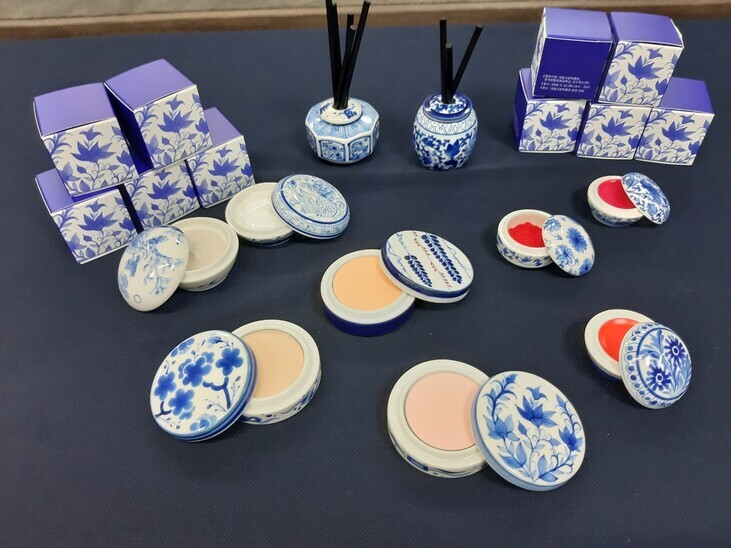
“I found a horse made of wood in the ground.”
On Aug. 13, 2005, a call came in to the culture and tourism division of Namyangju City Hall in Gyeonggi Province. The tip was provided by Kim Jeong-hee, a farmer who was then living in the city’s Sampae neighborhood.
Kim had been tilling an onion field near her home when she found a stone vessel with lacquered wooden horse sculptures inside.
She decided to report the discovery at the recommendation of a police officer who happened to pass by the field while she was debating what to do.
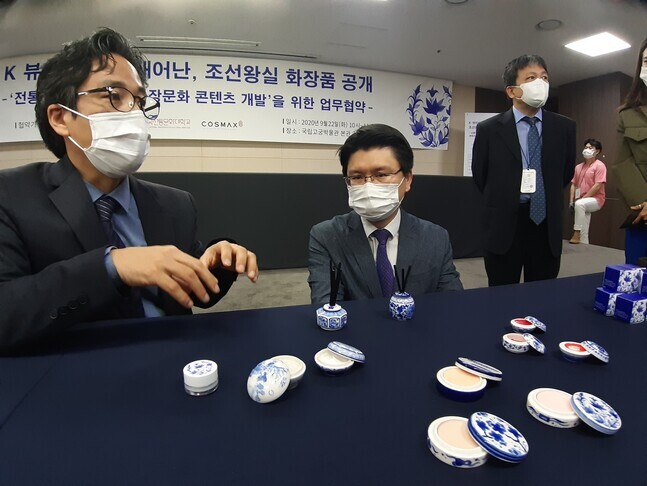
The Korea Institute of Heritage (KIOH) undertook an immediate excavation to recover the relics. It found other stone vessels, a small porcelain moon jar, lacquerware, an inkstone, and other items. The evidence pointed to a royal tomb. But KIOH did not have any suitable means of procuring funding for the excavation.
After a year’s wait, the institute reopened its survey with support from the Cultural Heritage Administration (CHA). It ended up hitting the jackpot: the site turned out to be the first tomb before the reburial of Princess Hwahyeop (1733-1752), the third daughter of the 18th century Joseon king Yeongjo and the older sister of Crown Prince Sado (1735-1762), who was famously killed by being sealed in a wooden chest on his father’s orders. At the age of 10, Hwahyeop was a tragic figure who was married to Sin Gwang-su, son of Prime Minister Sin Man, at the age of 10 and died nine years later of the measles. The items discovered in the tomb included a stone plaque (jiseok) bearing a message by King Yeongjo mourning his daughter’s death, as well as a Japanese-made bronze mirror, a blue-and-white porcelain bowl, and nine other pieces from the cosmetic set used by women in the royal house at the time.
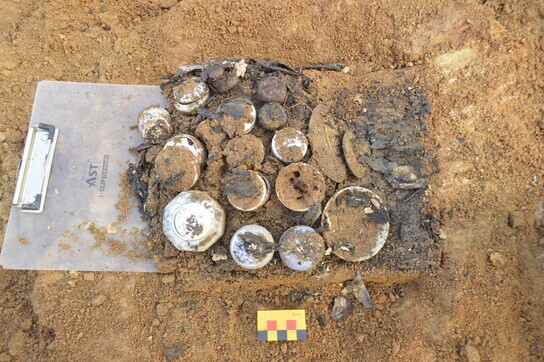
The excavation team, which included then office director Kim A-gwan, grew more and more excited as the third stone case in the now roped-off tomb turned up a treasure trove of blue-and-white porcelain cosmetics containers wrapped in faded silk cloths. Sensing that the items might be damaged if exposed to sunlight, Kim immediately contacted the Seok Ju-Seon Memorial Museum at Dankook University, a research institution specializing in costume history. Researchers raced over from the museum, and after about an hour of working quickly, the items were placed in devices to maintain constant temperature and humidity for their transfer to the National Palace Museum of Korea.
Ants used in cosmetics?Another year passed before the National Palace Museum announced findings in March 2017 from an analysis of the cosmetics containers. The results were astonishing: magnification of a fluid found in an octagonal blue-and-white porcelain jar the size of a person’s palm revealed hundreds of yellow meadow ants. No reason was found as to why the ants had been used. Also discovered was fine earth used as a pack for the face; a cream with a mixture of wax and organic ingredients; a cinnabar powdered used like lipstick; and a mixture of lead carbonate and talc used for foundation. In particular, many of the ingredients in the containers were found to produce facial whitening effects, but with ingredients such as lead and mercury that are not used today because of their toxicity. The variety of items offered the first evidence of the particular attention that not only late-Joseon gisaeng (entertainers) but also noblewomen from the royal house paid to their facial beauty, using heavy metal and plant-based materials -- and even ants.
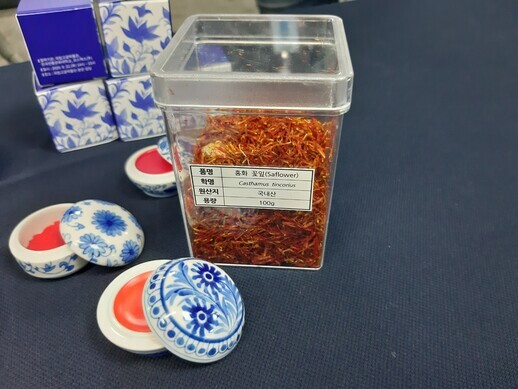
Having come to light through a tortuous four-year process, the cosmetics used by Princess Hwahyeop are now being resurrected in the form of modern 21st century items. In an event at its auditorium on the morning of Sept. 22, the National Palace Museum of Korea unveiled “Princess Hwahyeop,” a new product lineup developed in conjunction with the Korea National University of Cultural Heritage (NUCH) and the cosmetics manufacturer Cosmax. Based on its analysis of ingredients in the cosmetics excavated from the princess’s tomb, a team led by NUCH professor Chung Yong-jae worked with Cosmax technicians to conduct experiments involving application to the human body. The resulting products include whitening cream, a foundation using traditional ingredients, moisturizing hand cream, and lip balm.
Chung described the products as the “result of a cultural heritage reuse efforts with the objective of creating a new ‘K-beauty’ model incorporating the values of our traditional cosmetic cultural heritage.”
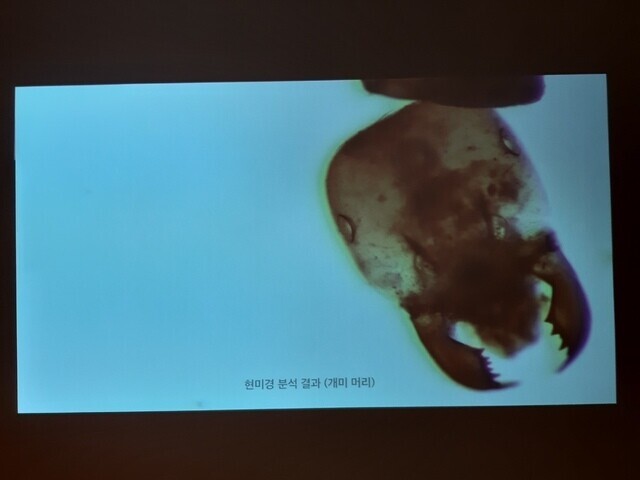
“[The items] include cosmetic ingredients found in the princess’s tomb, including wax and safflower petals, while the brand’s history and image have been accentuated by placing the contents in modern blue-and-white porcelain containers that are simplified versions of the cosmetic containers from the tomb,” he added. The main ingredients used to produce color in the cosmetics unearthed from the princess’s tombs were highly toxic heavy metals such as white lead. The new cosmetics forgo these ingredients in favor of natural substitutes, with more emphasis on the clean design of the porcelain containers than on the scent or color. Chung explained that the excavated cosmetic ingredients raise risks of heavy metal poisoning, with weak color properties and proneness to decomposition, leaving substitution with a mixture of modern ingredients as the only option. He also said that the items unveiled on Sept. 22 were prototypes, with sales to begin at the end of the year after an enhancement process.
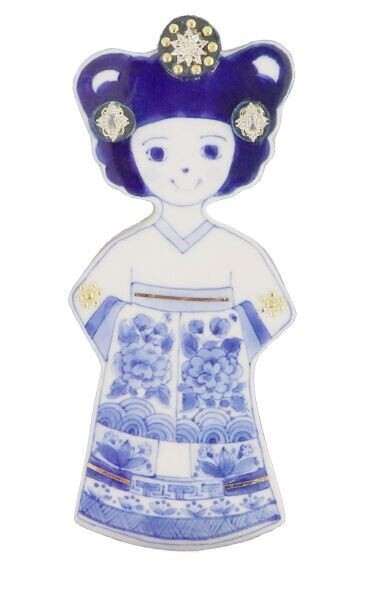
According to the “Hanjungrok” record written by Lady Hyegyeong, the wife of Crown Prince Sado, Princess Hwahyeop was a beautiful and self-possessed young woman who was deeply devoted to her parents. She is also described as having been particularly compassionate, having suffered similarly cold treatment from King Yeongjo to her brother the crown prince. The character image presented on Sept. 22 was a recreation of what the princess may have looked like.
Forgotten since the princess’s reburial in the 1970s, the initial tomb turned up a chance discovery of cosmetic relics that have now led to the development of modern products and a character logo four years after their excavation. Given the tragic life of the princess and her death before reaching the age of 20, these developments call to mind the old saying about how the most terrible things can sometimes be blessings in disguise.
By Roh Hyung-suk, culture correspondent
Please direct comments or questions to [english@hani.co.kr]

Editorial・opinion
![[Column] Season 2 of special prosecutor probe may be coming to Korea soon [Column] Season 2 of special prosecutor probe may be coming to Korea soon](https://flexible.img.hani.co.kr/flexible/normal/500/300/imgdb/original/2024/0426/3317141030699447.jpg) [Column] Season 2 of special prosecutor probe may be coming to Korea soon
[Column] Season 2 of special prosecutor probe may be coming to Korea soon![[Column] Park Geun-hye déjà vu in Yoon Suk-yeol [Column] Park Geun-hye déjà vu in Yoon Suk-yeol](https://flexible.img.hani.co.kr/flexible/normal/500/300/imgdb/original/2024/0424/651713945113788.jpg) [Column] Park Geun-hye déjà vu in Yoon Suk-yeol
[Column] Park Geun-hye déjà vu in Yoon Suk-yeol- [Editorial] New weight of N. Korea’s nuclear threats makes dialogue all the more urgent
- [Guest essay] The real reason Korea’s new right wants to dub Rhee a founding father
- [Column] ‘Choson’: Is it time we start referring to N. Korea in its own terms?
- [Editorial] Japan’s rewriting of history with Korea has gone too far
- [Column] The president’s questionable capacity for dialogue
- [Column] Are chaebol firms just pizza pies for families to divvy up as they please?
- [Column] Has Korea, too, crossed the Rubicon on China?
- [Correspondent’s column] In Japan’s alliance with US, echoes of its past alliances with UK
Most viewed articles
- 1‘We must say no’: Seoul defense chief on Korean, USFK involvement in hypothetical Taiwan crisis
- 2Is Japan about to snatch control of Line messenger from Korea’s Naver?
- 3No good, very bad game for Korea puts it out of Olympics for first time since 1988
- 4Samsung subcontractor worker commits suicide from work stress
- 5[Editorial] Korea’s surprise Q1 growth requires objective assessment, not blind fanfare
- 6Division commander ordered troops to enter raging flood waters before Marine died, survivor says
- 7N. Korean delegation’s trip to Iran shows how Pyongyang is leveraging ties with Moscow
- 8Korea’s 1.3% growth in Q1 signals ‘textbook’ return to growth, says government
- 9Flying “new right” flag, Korea’s Yoon Suk-yeol charges toward ideological rule
- 10[Column] Park Geun-hye déjà vu in Yoon Suk-yeol